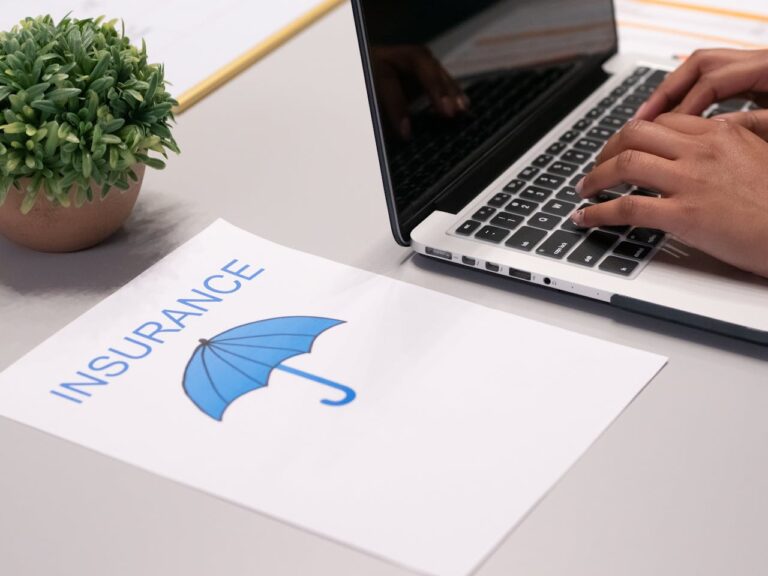Crafting a Customer Service Representative CV for Corporations

How to Craft a Winning Customer Service Resume
Crafting a standout customer service resume starts with showcasing your core strengths—active listening, problem-solving and clear communication—right at the top. In this call center CV example, you’ll learn CSR resume tips for formatting your contact details, writing a powerful summary, detailing CRM proficiencies and quantifying KPI improvements like CSAT and FCR to impress corporate recruiters.
Crafting a compelling customer service resume is essential for landing a role as a Customer Service Representative (CSR) in a corporate environment. Whether you’re submitting a call center CV example or tailoring your CSR resume tips to fit a specific company, focusing on clarity, relevance and measurable achievements can set you apart from other applicants. Below, you’ll find a structured guide to help you showcase your skills and experiences effectively.
Identifying Core Customer-Centric Competencies
Start by pinpointing the competencies most valued in customer service roles. These often include:
Active Listening: Demonstrating empathy and understanding of customer concerns.
Effective Communication: Conveying information clearly, whether via phone, email or live chat.
Problem-Solving: Quickly diagnosing issues and guiding customers toward resolutions.
Adaptability: Remaining calm under pressure and adjusting to shifting priorities.
Team Collaboration: Sharing insights with colleagues to improve overall service quality.
In your resume’s skills section, list these core competencies prominently, using exact phrases—like “active listening” and “problem-solving”—to align with Applicant Tracking Systems (ATS) searches for customer service resume keywords.
Formatting Your Contact Information and Summary
A polished header and summary are the first things recruiters see in your call center CV example. Follow these tips:
Contact Information: Place your name in a large, bold font. Directly beneath, include your phone number, professional email address, LinkedIn URL (if applicable) and city/state.
Professional Summary: Write 2–3 sentences that encapsulate your experience, strengths and career objective. For example:
“Dedicated Customer Service Representative with 4 years of experience in high-volume call centers, achieving a 95% CSAT score by resolving issues efficiently and maintaining positive client relationships. Seeking to leverage strong communication skills and CRM expertise to enhance customer satisfaction at [Company Name].”
Use customer service resume keywords like “customer satisfaction,” “call center,” and “CRM” to improve visibility.
Demonstrating Problem-Solving and Communication Skills
Your work experience section should turn abstract competencies into concrete achievements. Structure bullet points around the STAR method (Situation, Task, Action, Result):
Situation/Task: Describe the context—e.g., handling 80+ daily support tickets.
Action: Detail what you did—e.g., implemented a new troubleshooting checklist.
Result: Quantify the outcome—e.g., reduced average call handling time by 20%.
Example bullet:
• Managed an average of 75 customer inquiries per day via phone and email, employing active listening and empathy to resolve 90% of issues on first contact.
This approach showcases your communication prowess and analytical mindset, both critical in a CSR role.
Listing CRM and Helpdesk Software Proficiencies
Corporations rely on various platforms to track customer interactions. Dedicate a section (or subsection under Skills) to your technical proficiencies:
Zendesk
Salesforce Service Cloud
Freshdesk
Microsoft Dynamics 365
LiveChat or Intercom
Whenever possible, mention how you used these tools to drive results—e.g., “Leveraged Zendesk’s automation features to streamline ticket triage, cutting response times by 30%.”
Highlighting KPI Improvements (CSAT, FCR)
Key performance indicators (KPIs) like Customer Satisfaction Score (CSAT) and First Contact Resolution (FCR) are vital metrics for any customer service resume. In your achievements, quantify improvements:
Boosted CSAT from 85% to 95% within six months by introducing personalized follow-up calls.
Achieved a 92% FCR rate by creating and sharing a cross-departmental knowledge base, reducing escalations by 40%.
These figures provide tangible evidence of your impact and help your CSR resume tips resonate with hiring managers seeking data-driven performers.
Sample Bullets for Handling Difficult Customers
To illustrate your ability to navigate challenging interactions—a must-have in any call center CV example—use targeted sample bullets:
Resolved escalated complaints from frustrated customers by offering tailored solutions and compensation, recovering 98% of at-risk client relationships.
Conducted calm, professional de-escalation on average 10 critical calls per week, maintaining a 4.8/5 quality rating in post-interaction surveys.
Designed and led weekly training sessions on empathy techniques for new hires, resulting in a 25% drop in customer grievances.
By blending clear formatting, keyword optimization and quantifiable results, your CSR resume will stand out in a crowded field. Tailor each section to reflect the needs of the corporation you’re targeting, and use this structure as a guide when crafting your next customer service resume or call center CV example.
18 Essential Customer Service Skills to Include on Your CV
When crafting your customer service resume, showcasing the right mix of interpersonal and technical abilities can help you stand out in a competitive applicant pool. Below are 18 key skills—backed by concrete examples—that hiring managers look for in a call center CV. Highlight these competencies throughout your CV to demonstrate your readiness for a corporate CSR role.
1. Active Listening
Demonstrates empathy by fully concentrating on customer concerns, asking follow-up questions, and confirming understanding before proposing solutions.
2. Verbal Communication
Conveys information clearly and professionally over the phone, using positive language to build rapport and defuse tension.
3. Written Communication
Crafts concise, error-free emails and live-chat responses that address customer needs and maintain brand voice.
4. Problem Solving
Analyzes issues quickly, identifies root causes, and applies creative troubleshooting to resolve inquiries on first contact.
5. Empathy
Shows genuine concern for customer feelings by acknowledging frustrations and offering personalized support.
6. Patience
Maintains composure during high-stress interactions, allowing customers the time they need to explain issues without rushing them.
7. Multitasking
Balances simultaneous tasks—such as updating CRM records while on calls—without sacrificing accuracy or service quality.
8. Time Management
Prioritizes and organizes tasks to meet SLAs and minimize average handle time, ensuring efficient workflow in a fast-paced environment.
9. Conflict Resolution
Employs de-escalation techniques—active listening, calm tone, and mutually acceptable solutions—to turn negative experiences into positive outcomes.
10. Adaptability
Shifts seamlessly between channels (phone, email, chat) and adjusts to changes in policies, products or peak-volume periods.
11. Technical Proficiency
Navigates CRM and helpdesk platforms (e.g., Zendesk, Salesforce Service Cloud, Freshdesk) with ease and can learn new tools rapidly.
12. Product Knowledge
Keeps up to date on product features, policies and troubleshooting steps to provide accurate, confident guidance.
13. Attention to Detail
Ensures customer records, case notes and follow-up actions are logged precisely to support consistent service.
14. Team Collaboration
Shares insights and best practices with colleagues, contributes to knowledge-base articles and supports a culture of continuous improvement.
15. First Contact Resolution (FCR) Focus
Strives to resolve issues in a single interaction by leveraging resources, cross-functional contacts and clear communication.
16. Customer Satisfaction (CSAT) Orientation
Monitors feedback metrics, seeks opportunities to exceed expectations and follows up proactively to boost satisfaction scores.
17. Positive Attitude
Approaches each interaction with enthusiasm, projecting confidence that reassures customers and reinforces brand loyalty.
18. Cultural Sensitivity
Respects diverse backgrounds and communication styles, adapting tone and approach to meet global customer needs.
Assessment Test for CSR
| Company | Assessment Test | Provider | Key Skills Measured |
|---|---|---|---|
| Amazon | Virtual Job Tryout | Talent Plus | Situational judgment, customer focus, work style |
| Apple | Customer Service Assessment | eSkill | Communication, problem solving, multitasking |
| Comcast | Customer Care Simulation | SHL | Empathy, conflict resolution, decision making |
| American Express | Customer Service Situational Judgment Test | American Express | Client interaction, adaptability, problem solving |
| T-Mobile | Call Center Simulation | Aon | Active listening, policy knowledge, efficiency |
| Verizon | Customer Support Online Assessment | HireVue | Verbal reasoning, technical aptitude, CSAT focus |
| Hilton | Front Desk & CSR Simulation | Pearson VUE | Service orientation, sales skills, teamwork |
| Delta Air Lines | Service Aptitude Battery | PSI Services | Customer empathy, stress management, adaptability |
| Bank of America | Customer Service Situational Judgment Test | Saville Consulting | Decision making, regulatory compliance, communication |
FAQ
Your resume should feature a clear header with contact information, a concise professional summary, a skills section showcasing customer-centric competencies, a detailed work experience section with quantified achievements, and a technical proficiencies section listing CRM/helpdesk tools you’ve used.
Use the STAR method in your bullet points—describe the Situation, Task, Action and Result—and include metrics like CSAT improvement or average handle time reductions to demonstrate real impact.
Commonly sought tools include Zendesk, Salesforce Service Cloud, Freshdesk, Microsoft Dynamics 365 and Intercom. Highlight not just familiarity but how you leveraged these platforms to streamline workflows or boost KPIs.
Turn problems into achievements: explain how you diagnosed recurring issues, introduced solutions (like a troubleshooting guide) and quantify outcomes (e.g., cut ticket resolution time by 20%).
In your experience bullets, specify the baseline and the improvement—e.g., “Increased FCR from 78% to 92% by developing a cross-departmental knowledge base,” or “Raised CSAT to 95% through proactive follow-up calls.”
Aim for one page if you have under 10 years of experience. For more extensive backgrounds, two pages can be acceptable—just ensure every line adds clear value and relevance to the CSR role.






